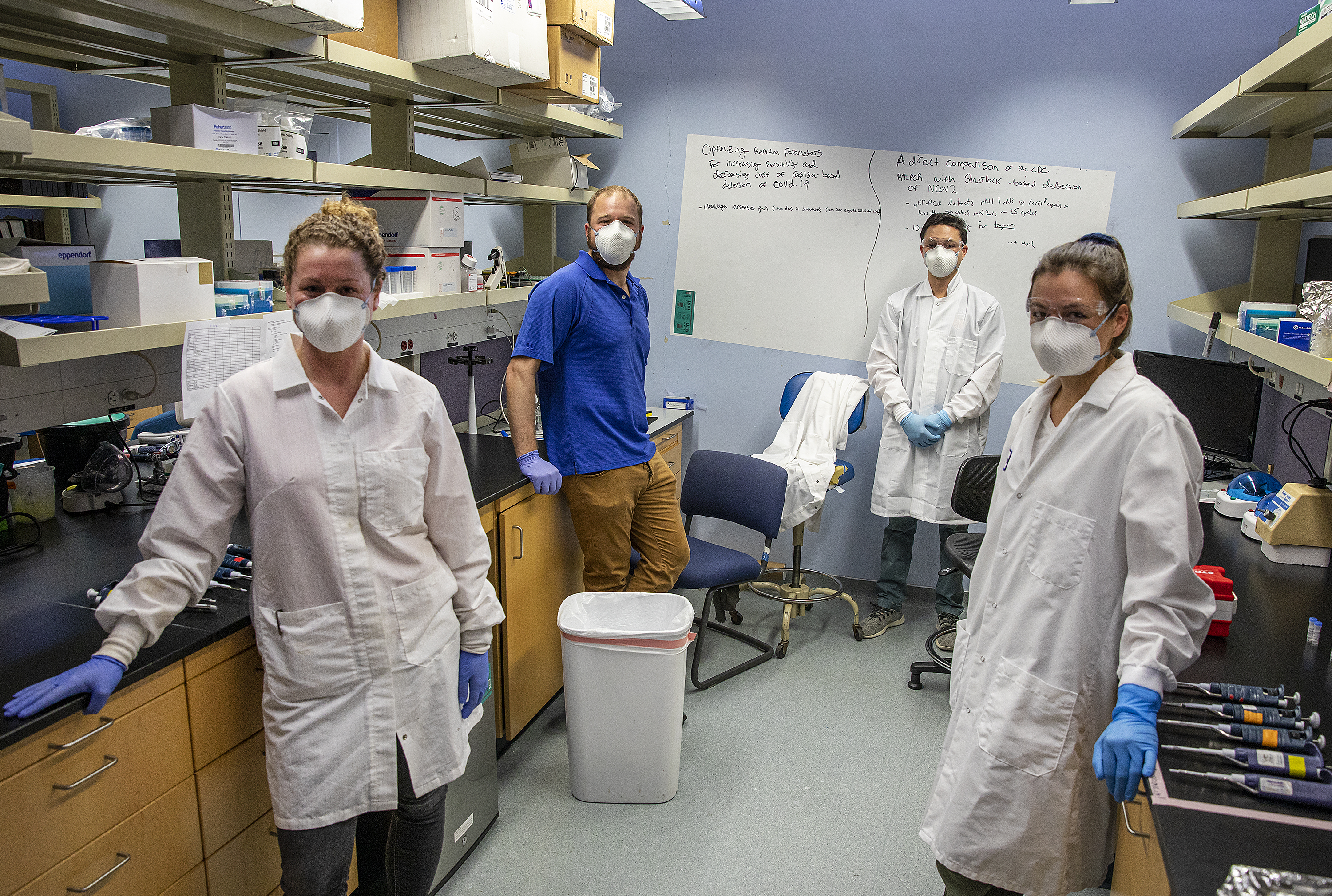UCSB Molecular Biologists to the Rescue
Donation of Key Chemicals Maintains Rate of COVID-19 Testing

The slow rate of COVID-19 testing, a continuing source of frustration in Santa Barbara County, would have been significantly slower were it not for the critical donation made by four UCSB professors working on a COVID-19 test of their own. The researchers donated key chemicals needed by Santa Barbara County’s Public Health Department so that its tests could proceed.
The chemicals, known as reagents, are critical ingredients to determine whether telltale enzymes specific to the virus are present. The donation of this particular reagent — called TaqMan — was enough to allow county public health officers to process 600 test kits at a public health lab in Ventura County. Santa Barbara County does not have its own processing lab, and the Ventura facility has proved to be among the most reliable and fastest.
The four UCSB molecular biologists — Max Wilson, Carolina Arias, Kenneth Kosik, and Diego Acosta Alvear — provided a pipette’s worth of TaqMan 1 to Dr. Stewart Comer, director of the Cottage Health Laboratory and head of the county’s testing program. As Comer explained, reagents are key ingredients in the COVID test and the shortage of them threatened to slow down the rate at which tests are processed in Santa Barbara County. “You can’t get them on back order,” Comer said. “It’s like making a cake; you need exactly the right ingredients.”
County Supervisor Gregg Hart is credited with making the link between Comer and the UCSB professors. According to Wilson, those research efforts look extremely promising and might yield a new test that’s significantly cheaper, faster, and more sensitive than the ones now deployed, which typically take anywhere from one to six days to obtain results.
Wilson said the group was willing to give up so vital an ingredient because it would be used on tests involving people who are clearly sick right now. The test Wilson and his colleagues are working on, he noted, will be initially used to discover the prevalence of the infection among individuals who are asymptomatic (i.e., showing no symptoms). If and when this kit is eventually cleared for testing, it still will not be clinical in application.
Translated, that means it would be administered to 3,000 asymptomatic subjects to find out how many individuals are infected. The results will not be used to notify individuals whether they are infected or not; rather, the aggregate numbers will paint a statistical picture of how widespread the infection has gotten.
That information, collected and tabulated in the aggregate, could be helpful in determining just how widespread the infection rates are among certain populations. “We kept enough [TaqMan] on hand to continue our research and verify our tests,” Wilson said. “But clearly, we prioritize sick people in the hospital [over] asymptomatic people. If they run out again, they can come back and get the rest of what we have.”
At the Santa Barbara Independent, our staff continues to cover every aspect of the COVID-19 pandemic. Support the important work we do by making a


